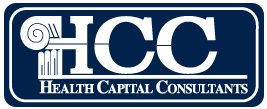The term “value” has many different meanings and definitions to different parties. Therefore, at the outset of each valuation engagement, it is critical to define appropriately (and have all parties agree to) the standard of value to be employed in developing the valuation opinion. The standard of value defines the type of value to be determined and answers the question “value to whom?” There are several standards of value that may be sought, including:
-
Fair Market Value (FMV): Value from the perspective of a universe of potential disinterested third parties, i.e., the rational investor. The fair market value standard attempts to assess how the market perceives the value of the business in question. Fair market value is the standard of value typically sought in healthcare valuation engagements, for the reasons discussed below.
-
Fair Value: Value usually assumed in an accounting or regulatory reporting context. While often it falls back on fair market value, the standards are not identical. For example, fair value as a legal standard may, depending on the jurisdiction, be applied in shareholder dispute or marital dissolution cases. The fair value would exclude discounts for lack of marketability and lack of control to ensure that dissenting parties are not penalized for the lack of control from which the dispute arises.
-
Investment Value: Sometimes referred to as strategic value, this standard of value pertains to a company’s value to a particular party or investor. The value of the business to certain parties—such as competitors, suppliers, or customers—is typically higher than it would be for a hypothetical rational third-party investor, due to the expectation of business synergies. Investment value varies depending on the value of the business to the specific purchaser; the business may well be more valuable to one competitor than to another, for example.
-
Liquidation Value: The other standards of value are based on the premise that the business will continue to operate, either independently or as part of an acquiring company. A distressed business is obviously worth less than a desirable, healthy business. As a result, liquidation value is based on the assumption that the business will be terminated.
Fair market value is the standard of value applied in most healthcare valuation engagements as a result of various industry regulatory requirements. For example, federal fraud and abuse laws, such as the Anti-Kickback Statute (AKS) and the Stark Law, prohibit certain types of remuneration between healthcare providers, unless that remuneration is based on fair market value. Additionally, for tax-exempt organizations to avoid excess benefit transactions in violation of Internal Revenue Service (IRS) regulations,1 they must pay “reasonable compensation” for services provided. Because the Fair Market Value standard is regulatory-driven, the following sections describe the main federal laws governing remuneration in the healthcare industry.
Anti-Kickback Statute (AKS)
The federal AKS makes it a felony for any person to “knowingly and willfully” solicit or receive, or to offer or pay, any remuneration, directly or indirectly, in exchange for the referral of a patient for a healthcare service paid for by a federal healthcare program, even if it is only one purpose of the arrangement.2
Due to the broad nature of the AKS, legitimate business arrangements may appear to be prohibited.3 In response to these concerns, the AKS contains a number of statutory exceptions, called “safe harbors,” which set forth regulatory criteria that, if met, shield an arrangement from regulatory liability.4 These safe harbors are meant to protect transactional arrangements unlikely to result in fraud or abuse. In order for a payment to meet the requirements of many AKS safe harbors, the remuneration must not exceed the range of Fair Market Value, defined as:
“arms-length transactions...not determined in a manner that takes into account the volume or value of any referrals or business otherwise generated between the parties for which payment may be made in whole or in part under Medicare, Medicaid or other Federal health care programs.”5
Stark Law
The Stark Law prohibits physicians from referring Medicare patients to entities with which the physicians or their family members have a financial relationship (or billing for services resulting from such referrals) for the provision of certain services, termed designated health services (DHS).6 Regulated financial relationships include: (1) ownership interests (direct and indirect), through equity, debt, or other means, in an entity that provides DHS; and (2) compensation arrangements between physicians and entities involving any remuneration, directly or indirectly, in cash or in kind.7 Similar to the AKS safe harbors, without these exceptions, the Stark Law might prohibit legitimate business arrangements. Note that in order to meet the requirements of many exceptions related to compensation between physicians and other entities, compensation must not exceed the range of Fair Market Value.
The Stark Law defines Fair Market Value somewhat differently depending on whether the subject payment is for the rental of equipment, the rental of office space, or for some other, general purpose. The general definition of Fair Market Value is “[t]he value in an arm’s-length transaction, consistent with the general market value of the subject transaction.” [Emphasis added.] General market value is defined, with respect to compensation for services, as: “compensation that would be paid at the time the parties enter into the service arrangement as the result of bona fide bargaining between well-informed parties that are not otherwise in a position to generate business for each other.”8
Excess Benefit Transactions
In order to avoid excess benefit transactions, tax-exempt organizations must pay reasonable compensation for services provided. The Internal Revenue Code defines reasonable compensation as the “amount that would ordinarily be paid for like services by the enterprises (whether taxable or tax-exempt) under like circumstances,”9 and defines Fair Market Value as:
“the price at which property or the right to use property would change hands between a willing buyer and a willing seller, neither being under any compulsion to buy, sell or transfer property or the right to use property, and both having reasonable knowledge of relevant facts.”10
It is important to note that the consideration of a universe of hypothetical willing buyers of a healthcare enterprise, asset, or service—and not a specific buyer—is required in order to be under the umbrella of Fair Market Value. Typical willing buyers of healthcare physician practices, their assets, or their services include hospitals/health systems, private equity (PE) firms, payors/“payviders,” and other providers/medical groups.
When considering the universe of hypothetical and typical willing buyers of a physician practice, note that PE firms, medical groups, and payors have acquired the vast majority of practices during the last five years. Physician polling data shows that most physicians are choosing to become employed rather than operate their own practices due to increased costs and burdens, such as commercial insurer prior authorization requirements. However, the data shows that hospitals are not the primary acquirers of physicians. In fact, other entities have acquired far more individual physicians and physician practices than hospitals, and those acquisition deals have total dollar values that are far greater than those for hospitals (see Figure 1 below).
Figure 1: Percentage of Acquired Physicians by Type, 2019-202311

Each of these potential acquirers are discussed below.
Hospitals/Health Systems
While physicians face increased difficulty in maintaining an independent practice, reduced reimbursement and increased administrative requirements mean that hospitals must play a key role in ensuring continued access to and provision of healthcare services for the communities they serve. As a result, the local hospital has been a natural landing spot for physicians unable to continue in private practice.
Hospitals/health systems are generally oriented toward care delivery, clinical integration, market share, and historical and long-term relationships. They are focused on acquired ancillary services (such as imaging and therapy services) that are convertible to increased hospital-based reimbursement.
The advantages to physicians choosing to sell to or enter employment with hospitals/health systems include the following:
-
Increased and stable compensation (based on market value)
-
Increased focus on patient care and reduction/elimination of administrative responsibilities
-
Insulation from economic dynamics, such as declining reimbursements, increasing practice overhead and capital investment
-
Improved work-life balance
-
Increased opportunities to contribute to how care is delivered in the community, as the hospital/healthcare system has greater influence in the market
Private Equity (PE) Firms
PE firms pool money from groups of private investors to invest and acquire a stake in a company with the general goal of making a profit from that investment. PE firms typically buy, restructure, and resell companies.
PE firms focus on readily scalable practices with stable-to-increasing levels of reimbursement and opportunities to manage risk through improved practice performance. PE firms adhere to a “platform-based” strategy, characterized by acquiring a regionally dominant practice that can be utilized as a hub, followed by smaller add-on investments to quickly establish a regional competitive advantage. The strategy is to build scale while taking advantage of synergies resulting from geographic proximity.
The PE model is different from the hospital/health system model in that sellers typically receive larger consideration upfront, with the remaining consideration rolled over into equity in the platform organization. In addition, since physician practices typically distribute all available earnings to the owners, earnings before interest, taxes, depreciation, and amortization (EBITDA) must be “created” through a reduction in post-transaction physician compensation.
PE transactions with medical groups provide immediate capital that may be invested into health tech to streamline operations and incentivize innovation. However, PE also typically involves the relinquishment of physician control/autonomy. It has been argued that PE’s focus on profits may come at the expense of high-quality care.
Historically, PE transactions have not been constrained by the same legal or regulatory restrictions on practice acquisition as most health systems. However, federal and state regulatory agencies have recently indicated a renewed focus on antitrust enforcement of PE’s role in healthcare. Many states restrict ownership of medical practices and employment of physicians to certain licensed medical providers and facilities. Therefore, in order to comply with this restriction, PE firms have developed a transaction structure that allows an outside investor to share in the profitability of a medical practice through a management services organization (MSO), which may add another layer of complexity from the physician standpoint.
Payors/Payviders
Healthcare payors and providers used to be on opposite sides of the negotiating table; what was good for one was usually bad for the other. However, that relationship began to change with the introduction of the Patient Protection and Affordable Care Act (ACA) and increased acceptance of value-based care. Payors and providers found that working together could benefit both and have undertaken increased cooperation and collaboration, becoming “payviders.”
While fee-for-service remains the predominant reimbursement model, payors understand that for value to be achieved, they need to pay for outcomes rather than procedure volume. Therefore, there is an incentive for payors to own medical practices because it is easier to improve outcomes and reduce costs if they can control what is performed in physicians’ offices.
Payviders active in medical group acquisitions include Optum (the physician services arm of UnitedHealth Group), Humana, Cigna Medical Group, and Aetna/CVS Health.
Other Providers/Medical Groups
In addition to hospitals/health systems, PE firms, and payviders, other providers, such as larger medical groups and outpatient service providers, are actively acquiring medical groups.
The trend of small medical practices being acquired by larger medical groups is driven by a range of factors, including the high cost of technology, increased competition, and reimbursement challenges, as well as the attraction and retention of talent. These types of acquisitions are typically strategic in nature, as economies of scale and increased bargaining power with payors are the driving motivations for buyers.
Other outpatient service providers—such as dialysis centers, post-acute care providers, and urgent care facilities—are also acquiring medical practices. These acquisitions are driven by the goal of service diversification, the ability to capitalize on the current movement toward ACOs and other advanced payment models, and a longer-term strategy of being acquired by a larger corporate entity (e.g., PE).
Conclusion
Ever-increasing government scrutiny of the business activities of healthcare providers over the past several decades has led to tightened restrictions and increased regulatory enforcement, with both civil and criminal penalties. Enforcement efforts focus on areas such as fraud and abuse, anti-kickback, self-referral, and tax-exempt status. Note that many types of business arrangements, which would be regarded as typical motivations in commercial relationships between parties in other industries, present a significant risk of fraud in the healthcare industry. For example, referral relationships that would be both lawful and expected in other financial industries, may violate both federal and state healthcare fraud and abuse laws when they are found to exist between healthcare providers. Changes in the scope and nature of Medicare fraud and abuse enforcement as it relates to physician self-referral laws has created significant uncertainty for the transactional market for provider entities that provide DHS. As a result, there is a perception of greater risk in the valuation of these enterprises.
This current heightened regulatory environment for the healthcare industry affects the type of data required, the methodology employed, and the entire process of developing and reporting a valuation opinion related to healthcare entities. For example, a valuation analyst should be especially diligent in maintaining appraiser work files and should clearly define the important relationship between the analyst and healthcare legal counsel. In addition, at the outset of each valuation engagement, it is critical to define appropriately (and have all parties agree to) the standard of value to be employed in developing the valuation opinion. The valuation analyst should ensure that the client understands the various standards of value so that he or she can make an informed decision on the standard to be used in the valuation engagement.






